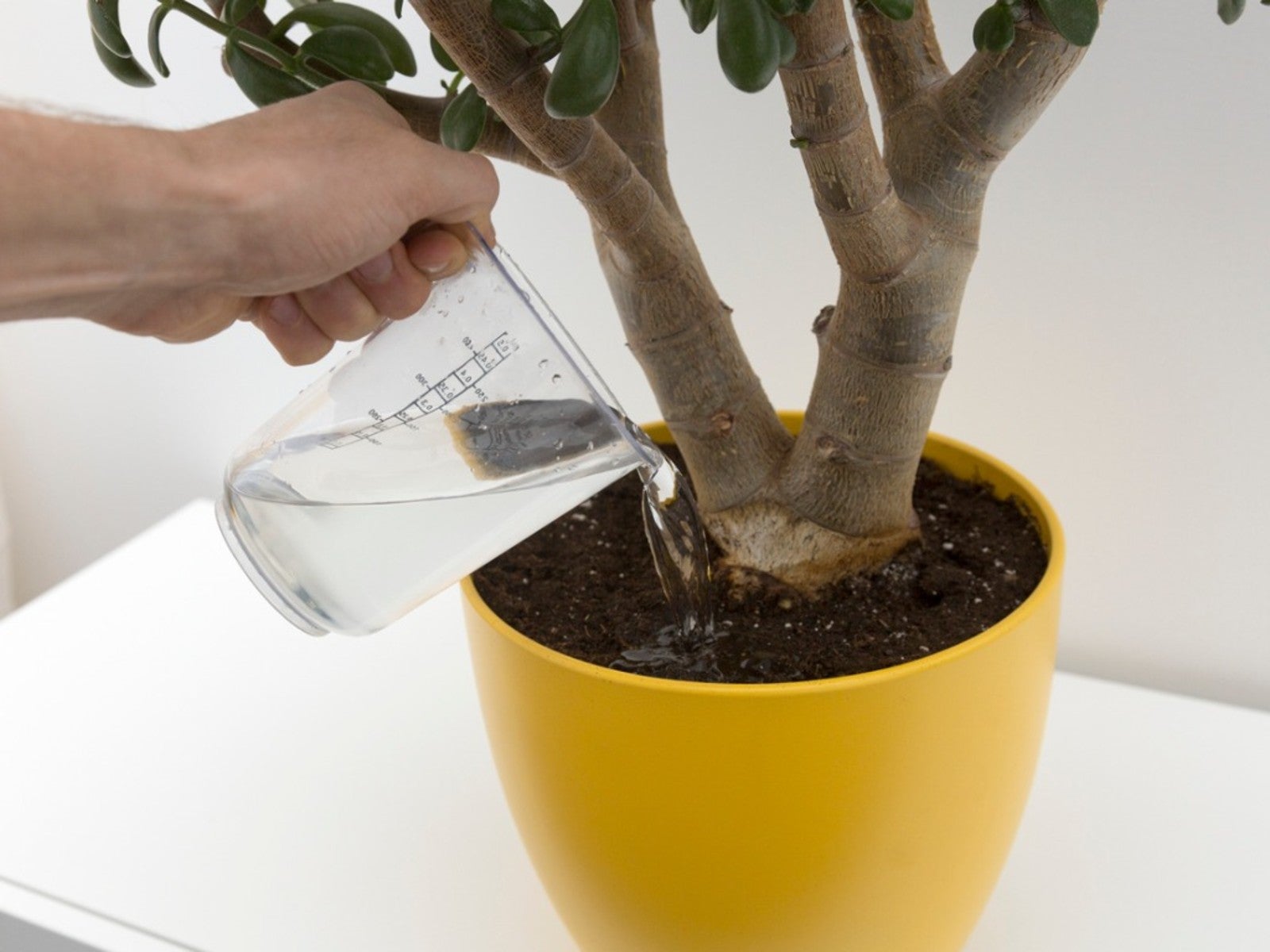Salt Leaching Methods: Tips On Leaching Indoor Plants


Potted plants have only so much soil to work with, which means they need to be fertilized. This also means, unfortunately, that extra, unabsorbed minerals in the fertilizer remain in the soil, potentially leading to nasty buildup that can harm your plant. Luckily, there’s an easy process for getting rid of this buildup, called leaching. Indoor plants should be leached regularly to keep their soil clear. Keep reading to learn more about how to leach a houseplant.
Reasons for Leaching Houseplants
The minerals you’re getting rid of are called salts. They were dissolved in water and left behind when the water evaporated. You might see them in a white buildup on the surface of your plant’s soil or around the pot’s drainage holes. This is evidence that there are even more salts in the soil. As these salts build up, plants have a harder time drawing up water. This can lead to browned, wilted, or lost leaves and slowed growth. If too many salts build up, the plant will draw moisture from its own root tips and die. For this reason, knowing how to leach a houseplant is important for its overall health.
Tips for Leaching Salt from Soil
Leaching indoor plants sounds intimidating but it doesn’t need to be. In fact, leaching salt from soil is easy. If you see visible white buildup on the surface of the soil, gently remove it, taking care not to take away more than ¼ inch (0.5 cm.) of soil. Next, take your plant outside or put it in a sink or bathtub -- anywhere lots of water will be able to drain freely. Then, slowly pour warm water over the soil, making sure it doesn’t overflow the rim of the pot. Pour twice as much water as the plant container would hold. For example, for a half gallon pot (2 L.), slowly pour a gallon (4 L.) of water. The water will absorb the salts and carry them away. Leaching houseplants every four to six months will make for clear soil and healthy plants.
Gardening tips, videos, info and more delivered right to your inbox!
Sign up for the Gardening Know How newsletter today and receive a free copy of our e-book "How to Grow Delicious Tomatoes".

The only child of a horticulturist and an English teacher, Liz Baessler was destined to become a gardening editor. She has been with Gardening Know how since 2015, and a Senior Editor since 2020. She holds a BA in English from Brandeis University and an MA in English from the University of Geneva, Switzerland. After years of gardening in containers and community garden plots, she finally has a backyard of her own, which she is systematically filling with vegetables and flowers.
-
 Try The Trend – Turn Any Bed Into A Keyhole Garden With This Clever In-Ground Composter
Try The Trend – Turn Any Bed Into A Keyhole Garden With This Clever In-Ground ComposterKeyhole gardening is an efficient and sustainable practice that saves space. Get started on this DIY project quickly and easily with an in-ground composter.
By Bonnie L. Grant
-
 4 Superfast Composting Methods: Turn Waste Into Garden Gold In 30 Days Or Less
4 Superfast Composting Methods: Turn Waste Into Garden Gold In 30 Days Or LessTry the fastest composting methods to turbocharge your pile and transform kitchen scraps and garden waste into finished compost in just a few weeks.
By Mary Ellen Ellis
-
 8 Easy Care Houseplants That Live A Long Time
8 Easy Care Houseplants That Live A Long TimeClick here to learn about our 8 favorite low maintenance houseplants that can, with proper care, live a long time.
By Amy Grant
-
 How Often Should You Repot Plants?
How Often Should You Repot Plants?Escaping roots and shrinking leaves may mean your plant wants a new pot, but some like staying cramped and cozy.
By Mary Ellen Ellis
-
 Orange Flowering Houseplant Varieties With Tropical Flair
Orange Flowering Houseplant Varieties With Tropical FlairClick here to learn about some cheerful orange-blooming houseplants you can try growing.
By Mary Ellen Ellis
-
 Variegated Houseplants With Lovely Leaves
Variegated Houseplants With Lovely LeavesWhat are some of the best variegated houseplants to add to your collection? Click here to find out.
By Amy Grant
-
 Lovely, Lacy Indoor Foliage Plants
Lovely, Lacy Indoor Foliage PlantsClick here to learn about some houseplants with lacy foliage to add to your collection.
By Mary Ellen Ellis
-
 Best Christmas Houseplants And Plants For Winter Holidays
Best Christmas Houseplants And Plants For Winter HolidaysClick here for an idea of the best houseplants to use for holiday décor for Christmas, Hanukkah, Kwanzaa, and New Year’s.
By Laura Miller
-
 Best Big Houseplants To Create An Indoor Oasis
Best Big Houseplants To Create An Indoor OasisIf you have the space you may want to grow some large houseplants. Here are some ideas.
By Mary Ellen Ellis
-
 Relaxing Plants To Grow Indoors For A Calmer Mind
Relaxing Plants To Grow Indoors For A Calmer MindAre there houseplants that can help you to relax? Click here to find out.
By Laura Miller